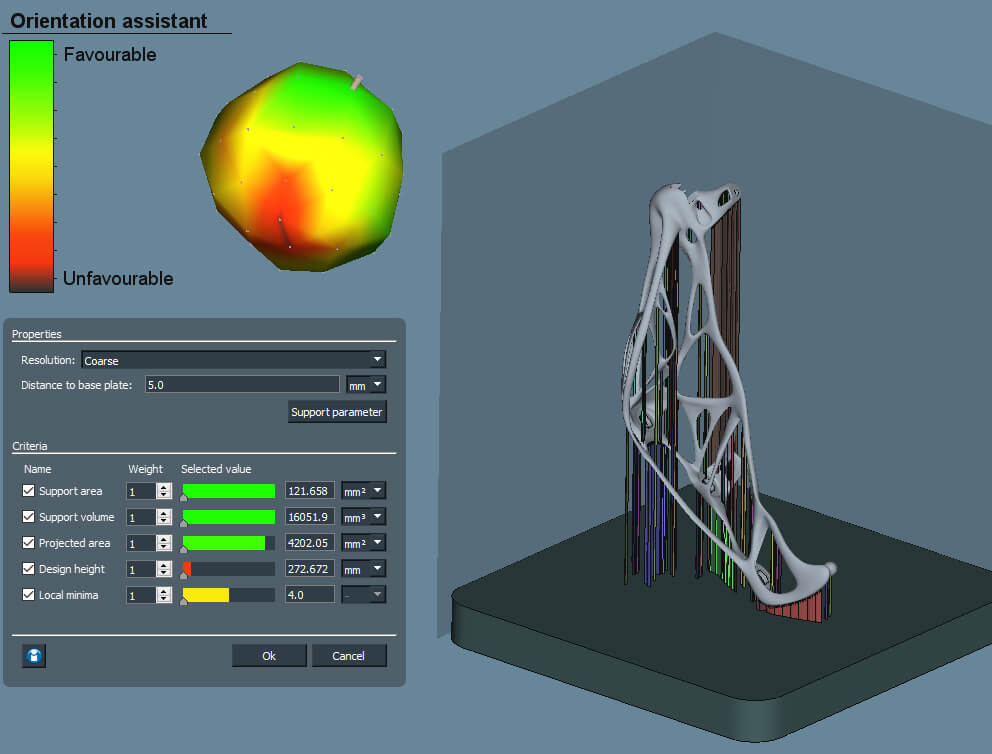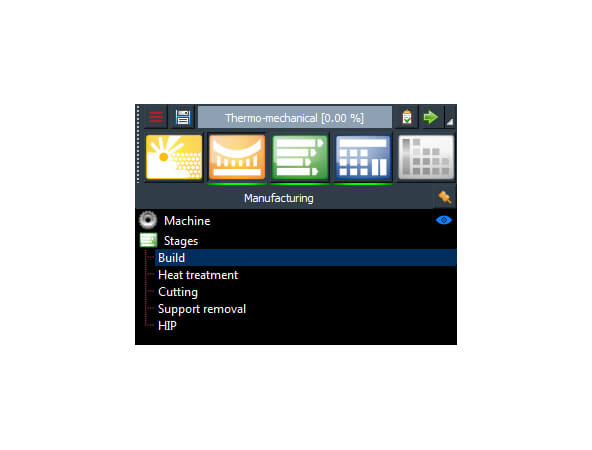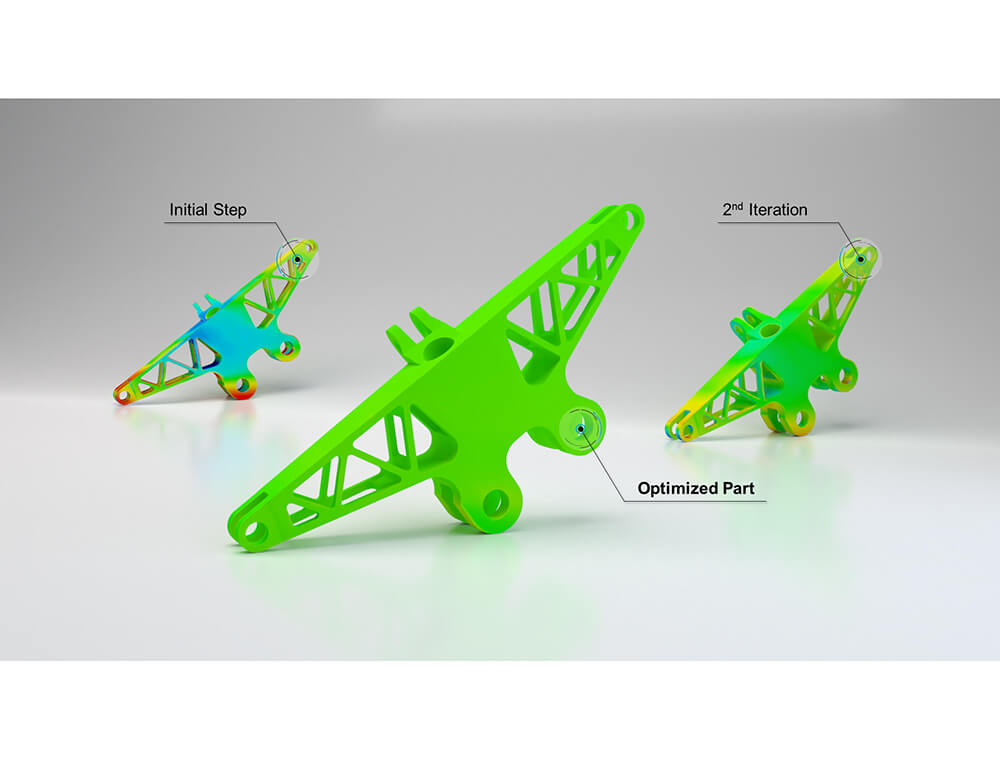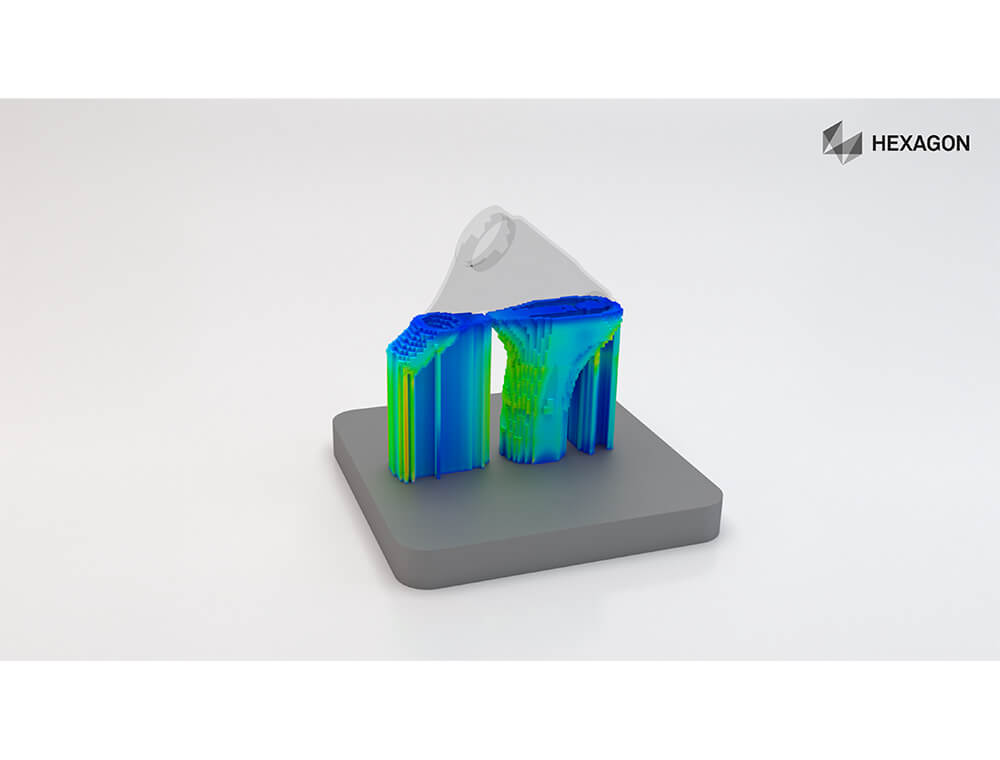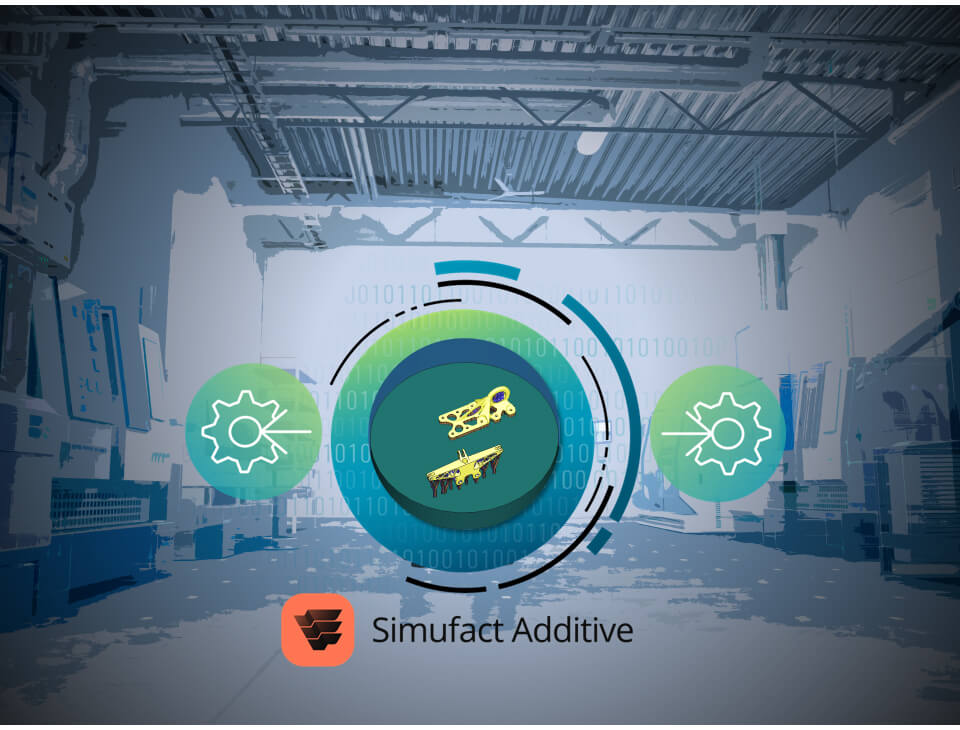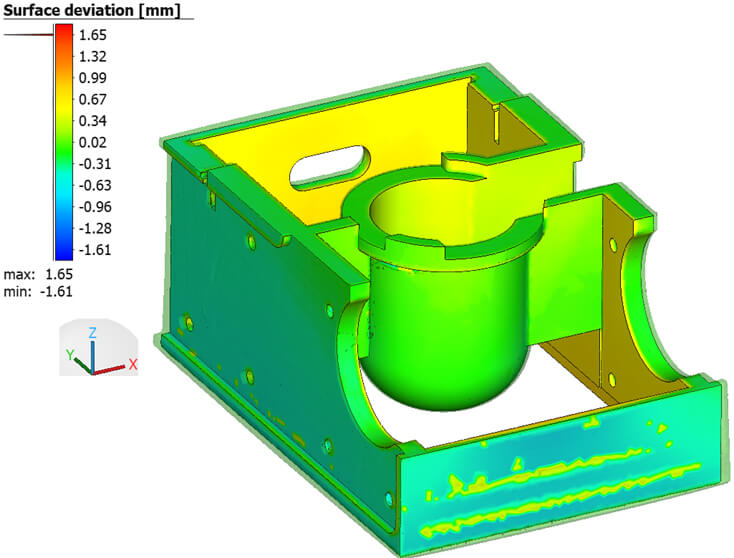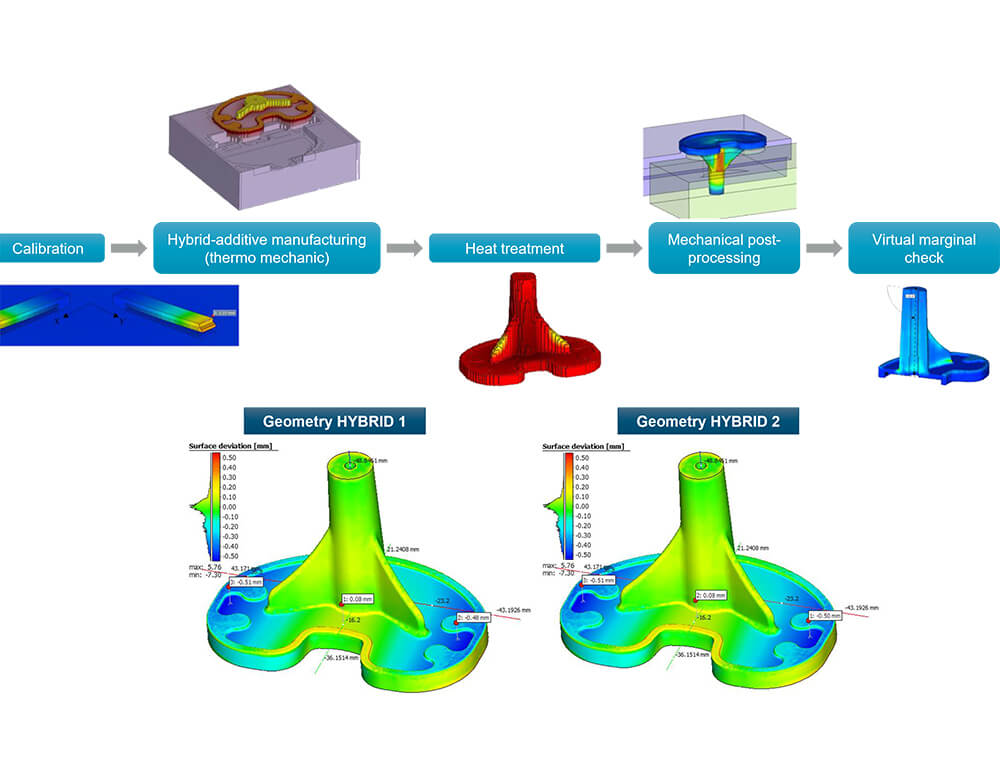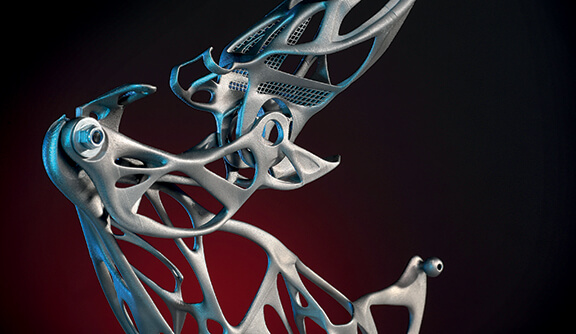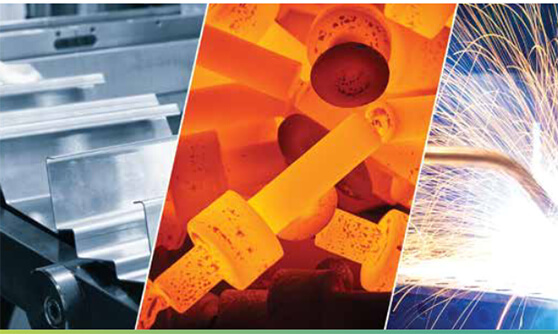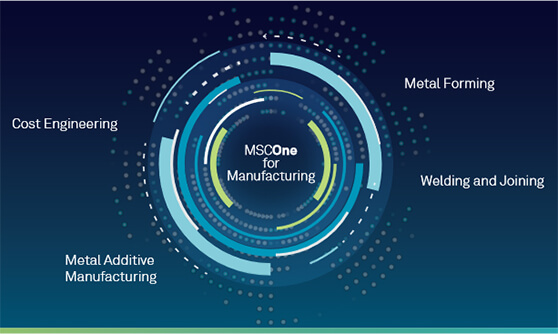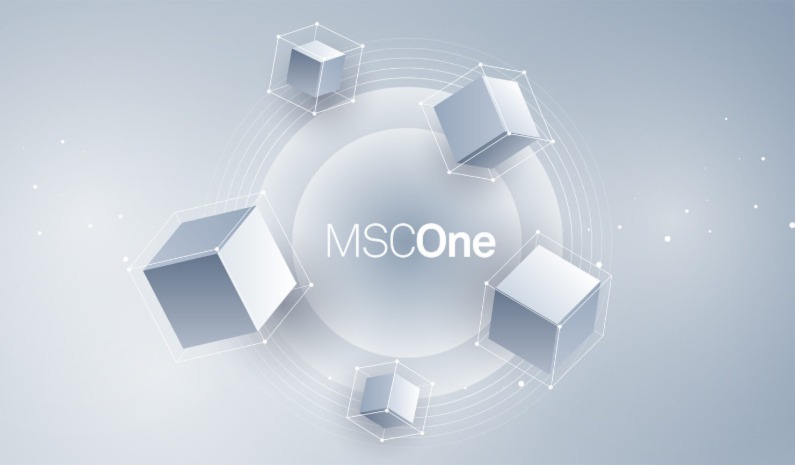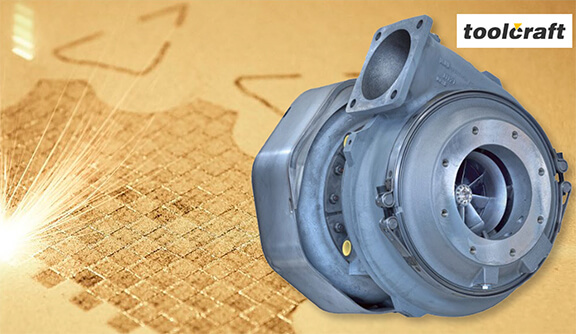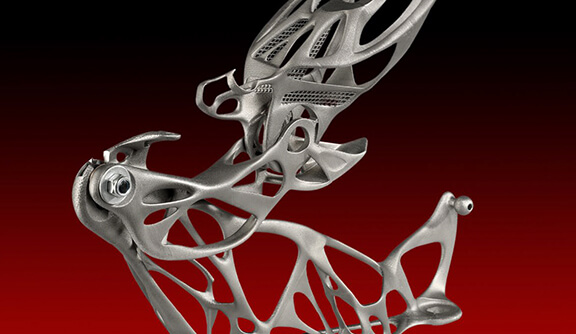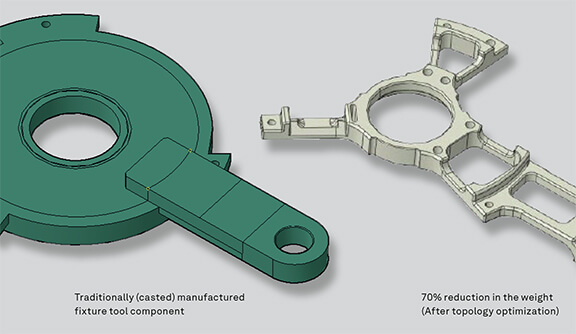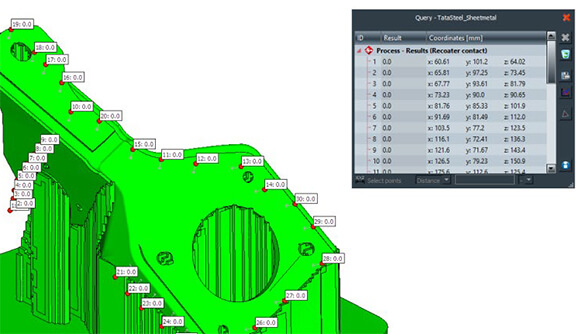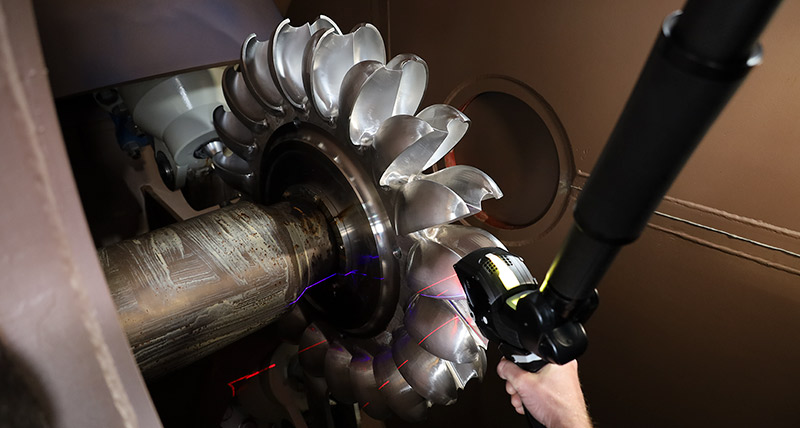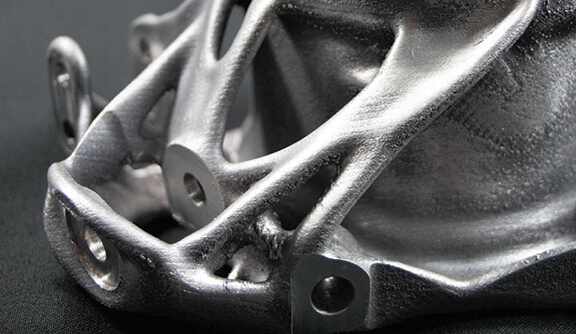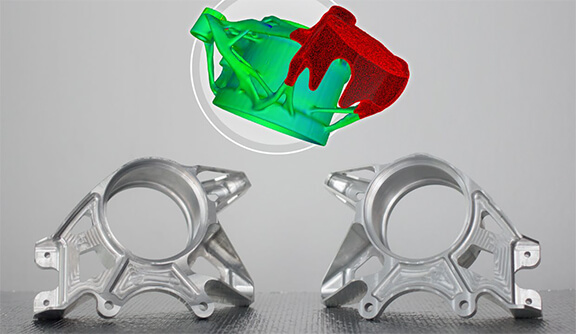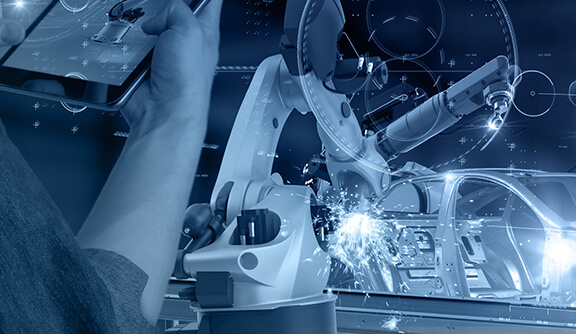Simufact Additive
Solution de simulation et optimisation de procédés de fabrication additive métallique permettant la prédiction des distorsions et contraintes résiduelles liées au process de fabrication.
Accurately simulate metal AM processes
To prevent costly defects, Simufact Additive enables the easy-to-use virtual simulation of the entire production process: From Support structure generation and removal to heat treatment, machining and more.
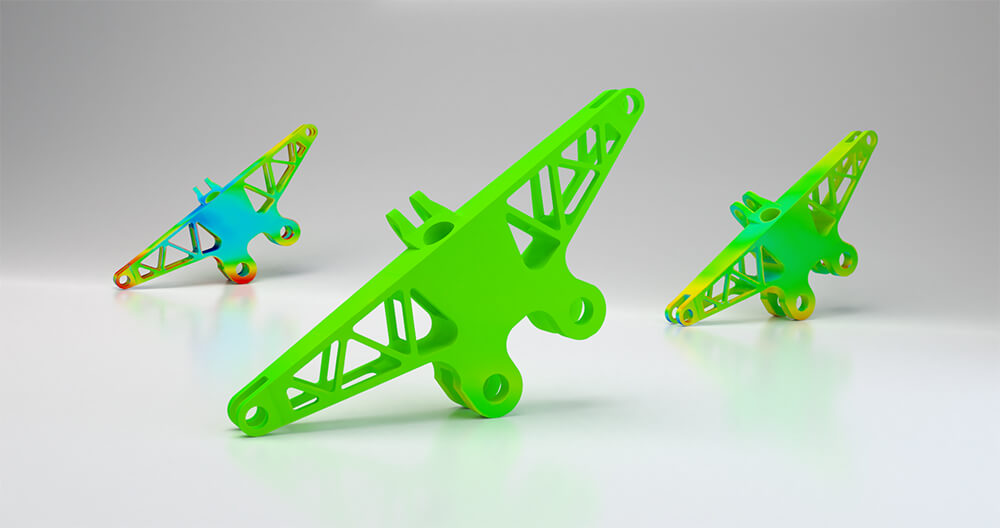
Ready to get started?
 Simufact Additive est une solution logicielle évolutive puissante permettant l'optimisation des process de fabrication additive (technologies lit de poudre : SLS, SLM, LBM, DMLS, EBM) pour une mise au point du process "du premier coup".
Simufact Additive est une solution logicielle évolutive puissante permettant l'optimisation des process de fabrication additive (technologies lit de poudre : SLS, SLM, LBM, DMLS, EBM) pour une mise au point du process "du premier coup".
En prédisant les distorsions et contraintes résiduelles générées dans la pièce au cours de son process de fabrication, Simufact Additive guide l'ingénieur méthodes lors de la phase de conception process en remplaçant les essais physiques par des essais virtuels, réduisant ainsi la durée et le coût du cycle de développement et mise au point process.
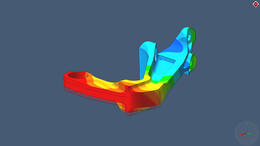
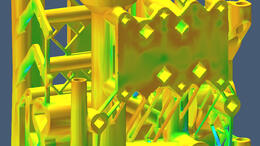
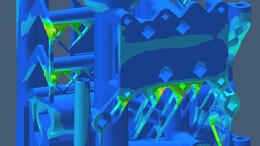
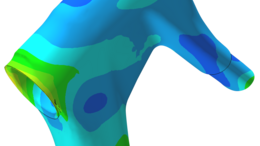
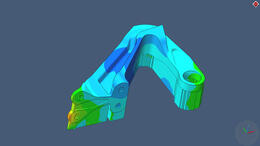
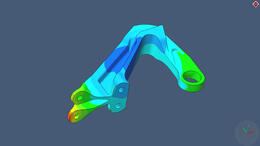
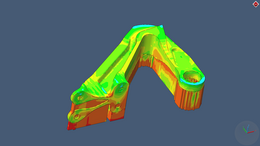
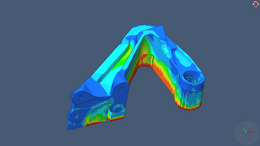
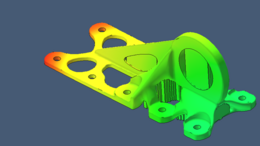
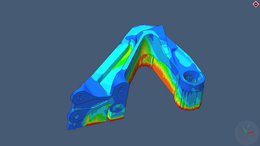

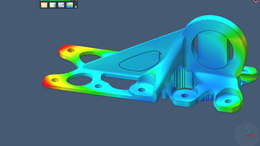
Simufact peut être utilisé pour explorer les différents paramètres du process de fabrication additive et mesurer l'influence de :
- Choix matière et caractéristiques de la poudre utilisée
- Paramètres du laser (puissance, vitesse de balayage, largeur de faisceau, etc.)
- Stratégie de balayage laser
- Stratégie de supportage
- Positionnement/orientation de la pièce
- Direction de découpe du plateau
- Etc.
Simufact permet de simuler la chaine complète du process de fabrication additive :
- Impression 3D
- Traitement thermique de détente
- Découpe du plateau
- Retrait séquencé des supports
- Optionnel traitement HIP (Hot Isostatic Press)
Simufact Additive utilise des méthodes numériques avancées afin de prédire :
- Les risques de défauts géométriques dus au rétreint, voilage, etc. (analyse des distorsions)
- Les risques de fissuration pièce et séparation des supports grâce à l'analyse des contraintes résiduelles
- La position optimale de la pièce permettant d'obtenir une distorsion minimale
- Le besoin de structure de supportage et la structure optimale permettant de contrôler l'intégrité géométrique de la pièce fabriquée
Avec Simufact Additive, fabriquez vos pièces en impression 3D correctement dès le premier essai !
Plus d'information ici
-
Collateral
-
eBookDesign for AM
-
eBookSeize success in EV manufacturing
-
Livre blancEnd-to-end solutions for smarter additive manufacturing
-
ArticleOptimising micro-hydroelectric power stations for
-
ArticleHow advancing CT analysis capabilities support
-
ArticleSimufact Additive: Accelerating the metal binder...
-
BrochureSimufact Additive Brochure
-
BrochureDesign & engineering simulation solutions
-
BrochureSimufact software solutions
-
-
On-demand webinars
-
WebinaireEngineering Simulation: Improve acoustic comfort
-
WebinaireIntroducing Marc 2019
-
WebinaireMSC Apex Generative Design 2020 Release Webinar
-
WebinaireAdvanced Simulation in Additive Manufacturing
-
WebinaireJust Hit "Print"
-
WebinaireOptimize Additive Manufactured Components
-
WebinaireSimulating the Reality by Considering Multiphysics
-
WebinaireHexagon Additive Manufacturing Suite
-
WebinaireStructural Integrity Simulation in Bio-Medical Industry
-
WebinaireHxGN Virtual Manufacturing Suite Introduction
-
WebinaireNext Level L-PBF AM Simulation
-
WebinaireChallenge your additive manufacturing problems..
-
Exactly the right metal AM process you need
Simufact Additive focuses on quick simulation of Laser Powder Bed Fusion including Selective Laser Melting (SLM), Direct Metal Laser Sintering (DMLS), LaserCUSING® and similar processes and reduces the need for multiple product iterations to produce 3D parts “first-time-right”.
- Prepare parts for build by orienting, identifying risks, estimating costs and generating supports
- Predict distortions, residual stresses and thermal effects via mechanical and thermal analysis
- Compensate for distortions automatically and support optimization
- Generate build files after slicing your parts
One of the key challenges for metal binder jetting manufacturers is to predict changes during the sintering process. Simufact Additive supports manufacturers to simulate the shrinkage considering amongst others the thermal strain, friction and the gravity during sintering
- Predict sintering-induced stress in advance and indicate where defects might occur
- Compensate for distortion automatically
- Dilatometry based densification prediction
- Can be expanded to other sinter based additive processes like MIM and CMF
PBF process and defect analysis (PDA)
Simufact Additive’s Defect Prediction Solution revolutionizes Metal Laser Powder Bed Fusion with a multi-scale approach. Swiftly predict defects and optimize local parameters, all within full-scale geometries. This hybrid analytical-numerical model-based module enables rapid thermal history and defect prediction at individual scan vector and powder layer levels. Predict and mitigate risks of keyholing, lack of fusion, balling up, and surface roughness.
Simufact Additive's machining module emerges as a specialized add-on to your additive manufacturing workflow. This module is specifically crafted to simulate the stress-relief phase of a part by removing material.
- An invaluable insight into how the component would behave.
- Engage in controlled, precision-based machining and ensure the structural integrity of your final product.
- Witness the seamless integration of additive manufacturing and subsequent machining stages, optimizing both your process and product quality.
The Geometry Inspection Module lets you compare a scanned body with its corresponding CAD file, swiftly calculating surface deviation and generating a compensated geometry.
- Reduces the deviation of the printed part by skillfully calculating a meaningful surface deviation comparison between the scanned component and its 'nominal CAD' simulation.
- With multiple reference geometries importable, easy selection, and part compensation options, this module is your go-to solution for enhancing accuracy in your additive manufacturing process.
Hexagon offers a dedicated solution specifically catered to the Directed Energy Deposition (DED) process in additive manufacturing.
Simufact Welding is specifically engineered to simulate DED processes with high precision. It provides insightful predictions of distortion and residual stresses, promoting optimized design strategies.
- Detailed analyses of temperature fields and identifies potential issues.
- User-friendly interface and a wealth of robust features, Simufact's solution streamlines the intricacies of DED, ensuring superior manufacturing outcome.
Print your 3D AM parts first-time-right with Simufact Additive
Design and optimise your metal AM process:
- Optimise the build-up orientation and the support structures
- Compensate distortion automatically to print the part as-designed
- Indicate criteria-based part failures, e.g. recoater crashes or risk of cracks
Costing – Estimate your costs for single parts and the entire printing job.
Simplicity – No expert knowledge required as the software solution is designed to be user-friendly, intuitive and process-oriented.
Sustainability – Save material, time and money by replacing expensive and time-consuming physical tests with virtual tests.
Learn more about Simufact Additive
Related articles
White Paper
